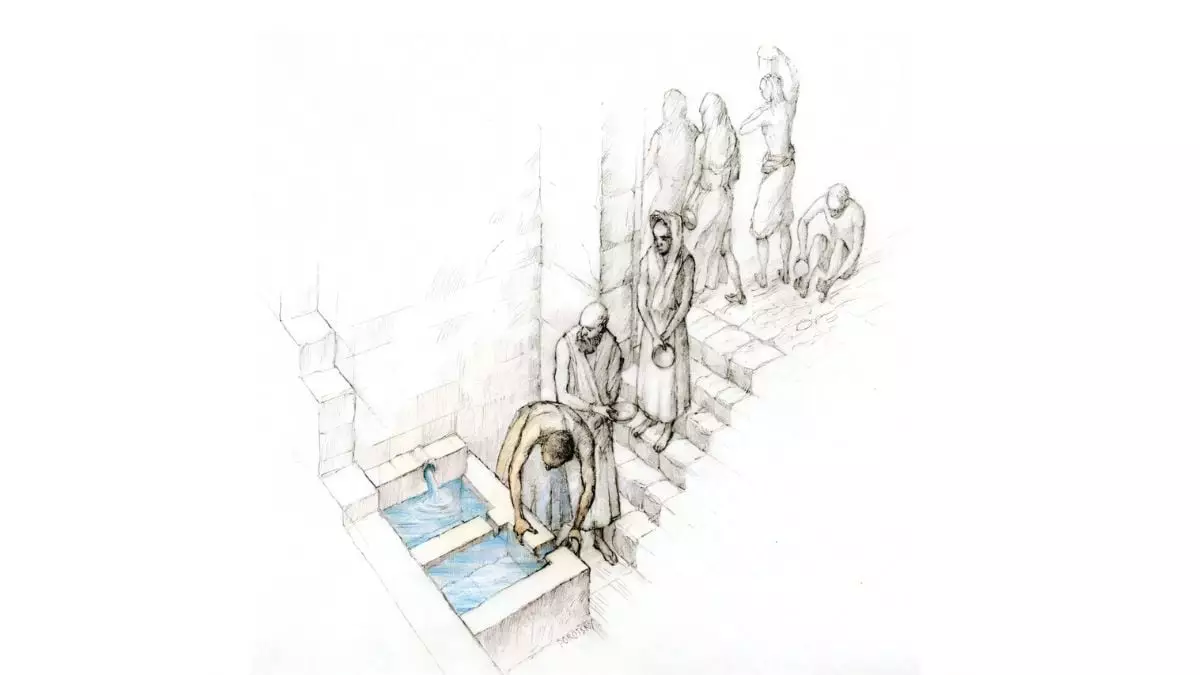The recent archaeological discovery in northern Israel sheds tremendous light on the practices of religious purification that were likely core to the worship cultures of the kingdom of Israel. The revelation of a unique bathhouse designed for ritual cleansing presents a compelling narrative that transcends mere historical significance; it reveals the intimate relationship between the sacred and the everyday for those who frequented the sanctuary. Dr. Levana Tsfania-Zias, a prominent figure in the excavation project, highlights an essential aspect of Near Eastern spirituality: the understanding that the divine requires both devotion and physical preparation in the form of cleansing rites. These intricate rituals, far from being mere formalities, served as profound conduits for connection with the divine.
The Sanctuary’s Unique Design
At the heart of this discovery is the bathhouse, encompassing two distinct rooms—each characterized by its vibrant plaster finishes. The yellow dressing area and the blue basin room provide more than just aesthetic detail; they reflect the nuanced approach to ritual cleanliness practiced by the priestly class. Standing in water instead of submerging offered an intimate yet practical alternative that speaks to the ingenuity of ancient religious practices. The choice of cold spring water flowing in from local sources indicates a deep commitment to natural elements in the purification process. It’s fascinating to ponder how the rituals conducted here would align with the spiritual philosophies of today, questioning the lengths to which modern practices have strayed from such fundamental tenets of physical engagement in spirituality.
Inscriptions and Deity Worship
Further enriching the narrative is the discovery of inscriptions in Greek and Aramaic that name an enigmatic deity—hinting at the complexities and regional uniqueness of ancient Near Eastern worship. This indicates that, while we often seek to categorize spirituality into neat boxes, the reality was far more intricate. The ambiguity surrounding the identity of deities reflects the pluralistic nature of ancient belief systems, which have significant echoes in the contemporary discussions on interfaith dialogue and inclusivity. Emphasizing the need for a deeper understanding of these ancient cultures may ultimately pave the way for a more nuanced appreciation of how sacred spaces functioned as melting pots for a multitude of beliefs.
The Evolution of Sacred Spaces
Fascinatingly, the sanctuary at Tel Dan did not remain static; it evolved through periods of destruction and reconstruction. Following the Seleucid destruction of the first temple, a new one arose, preserving the significance of ritual bathing. This adaptability underscores the idea that sacred spaces can transcend time, continually evolving to serve the spiritual needs of individuals. The resurgence of activity during the Middle-Late Roman period signals the ongoing relevance of such places, reinforcing the notion that there is a timeless humanity in the quest for spiritual connection and moral cleanliness.
A Call for Further Exploration
Though much has been uncovered, Dr. Tsfania-Zias notes that significant questions linger. The desire for additional excavations emphasizes a recognition of the site’s potential as a beacon of ancient spirituality, pulling the threads of history into a contemporary fabric. The findings at Tel Dan compel us to reflect on how our modern practices may mirror these ancient rituals, reinforcing the importance of immersive participation in spiritual life. Ultimately, the sanctuary reveals more than just a historical footprint—it serves as a profound reminder of humanity’s unyielding quest for divine connection.


Leave a Reply